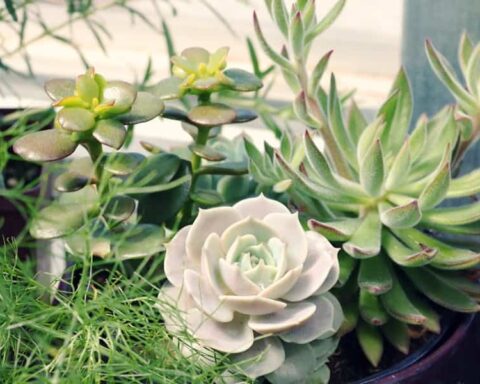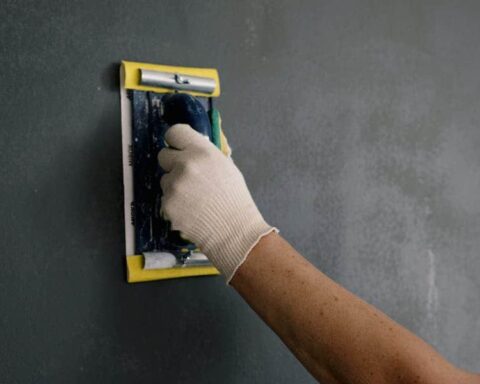Baseball, often called America’s pastime, is a game steeped in tradition and nuances. From the intricacies of pitching to the ballet-like movements of outfielders, every element has evolved for precision and performance. One such component that garners attention, especially for its distinct appearance and function, is the first base glove. Unlike its counterparts in the infield and outfield, the first base mitt stands out, not just in its design but also in its strategic purpose. Many casual observers might ask, “Why is there a need for such a specialized glove?” and “What sets it apart?” The answers lie deep in the foundations of baseball, as the role of a first baseman is as unique as the glove they don. Catching throws, scooping balls from the dirt, and ensuring safety during high-pressure plays—these actions demand a glove tailored to perfection. As we delve into the world of first base gloves, we will uncover the design intricacies, historical evolution, and the undeniable importance of this baseball essential. Prepare to step onto the diamond and explore why the first base glove is truly in a league of its own.
Why Are First Base Gloves Different?
First-base gloves are uniquely designed to cater to the specific needs of the position. They have a deeper pocket and are often larger, aiding first basemen in catching throws and scooping balls from the dirt. The mitt-like design, without individual fingers, allows for a broader catching surface and better security. These differences aren’t just aesthetic; they enhance the first baseman’s efficiency and safety during high-pressure plays. In essence, the design is all about optimizing performance at first base.
Design Characteristics Of The First Base Glove
The world of baseball is replete with specialized equipment, each tailored to cater to the specific demands of the game. One such piece of equipment that holds notable distinction is the first base glove. Its design intricacies are a testament to the importance and challenges of the first base position. Here’s a closer look at the salient design characteristics that make the first base glove unique:
- Deeper Pocket: One of the most identifiable features of a first base mitt is its deeper pocket. This design is deliberate, ensuring that the first baseman can effectively catch throws from other infielders, especially those coming at high speeds. The depth provides a cushion and a wider target, reducing the chances of missed balls and enhancing the success rate of catches.
- Larger Overall Size: Compared to other infield gloves, the first base mitt is generally larger. This increased size offers a broader catching surface, essential for the range of movements the player has to make. Whether it’s a low scoop or a high catch, the glove’s size plays a crucial role in ensuring the player doesn’t miss any throws.
- Open Webbing: The open webbing design of the first base glove serves a dual purpose. Firstly, it allows for quick ball retrieval. After catching, the player can quickly transfer the ball to their throwing hand, which can be critical during double plays or tight situations. Secondly, the open design aids in preventing dirt from getting trapped inside when scooping balls from the ground, ensuring a clean catch.
- Materials Used: The first base glove, like other premium baseball gloves, is typically made of high-quality leather. This ensures durability, given the volume of throws and scoops a first baseman must handle. The interior padding is also thicker, providing the necessary cushion against hard throws, thereby protecting the player’s hand.
- Extended Heel Design: Some first-base gloves come with an extended heel. This helps in low scoops, allowing the player to pick balls from the dirt with greater ease. The design reduces the chances of the ball bouncing off the heel of the glove, increasing the player’s efficiency on low throws.
- Single Post Web Design: This characteristic helps with visibility. As first basemen often have to catch balls while keeping their foot on the base, seeing the ball all the way into the pocket becomes crucial. The single post web ensures there’s less material obstructing the player’s view.
How Do I Choose My First Base Glove?
Selecting the right first base glove can be a game-changer for any player. It’s not just about picking a glove that fits your hand; it’s about choosing a glove tailored to enhance your performance at first base. If you’re on the hunt for the perfect mitt, here are some key considerations to keep in mind:
First and foremost, the glove should fit snugly but comfortably. Remember that all leather gloves will have a break-in period and will mold to your hand shape over time. It’s essential that your fingers reach the glove’s tips without feeling constricted. Moreover, consider the glove’s interior lining—some come with added cushioning for extra comfort.
For youth players, first-base gloves typically range from 11.5 to 12 inches, while adult players usually opt for sizes between 12 and 13 inches. The ideal size depends on your preference; some players favor a larger glove for its extended catch zone, while others prefer a more snug fit for better ball control.
The most popular material is leather due to its durability and the comfort it offers once broken in. While high-quality leather gloves can be more expensive, they tend to last longer and offer better performance. Synthetic gloves might be lighter and more affordable, but they may not provide the same longevity and feel as leather.
As we’ve established, first-base gloves come with an open web design. However, there are variations like the single post web, H-web, or double post web. Your choice should factor in the glove’s intended use (e.g., recreational play vs. competitive leagues) and personal preference.
Some gloves offer adjustable wrist straps, which can be beneficial to secure the glove to your hand better. This can be particularly useful if gloves feel loose around your wrist.
Youth leagues might have specific requirements or recommendations for glove size or design. Always check any league specifications before making a purchase.
Sometimes, the reputation of a brand can speak volumes about the quality you can expect. Brands like Rawlings, Wilson, and Mizuno have a history of producing quality baseball gloves. Reading reviews from other players can also provide valuable insights.
Keep in mind that almost all gloves require a break-in period. Some brands offer “game-ready” gloves that are 90% broken in when purchased, while others might need more time and effort to mold perfectly to your hand.
Benefits Of Using A Specialized First Base Glove
Baseball, with its strategic intricacies, demands specialized equipment for each position. This specialization is glaringly evident in the design of the first base glove, which has distinct features tailored to the unique challenges faced by first basemen. Here are some of the key benefits of using a specialized first base glove:
Enhanced Catching Ability:
The deeper pocket and larger size of a first base mitt provide a broader surface area for catching. This ensures that a wider range of throws, especially those that are off-mark, can be caught more effectively, thereby reducing the chances of errors.
Improved Safety:
The thick padding and premium materials used in the design of these gloves provide ample protection against hard-thrown balls. This safeguard is crucial, given the velocity and frequency of throws at the first baseman.
Efficient Scooping:
The unique design, with features like an extended heel, allows first basemen to scoop balls from the ground efficiently. This is especially valuable during low or errant throws, ensuring smoother plays and fewer missed catches.
Quick Ball Transfer:
The open webbing design aids in faster ball retrieval and transfer to the throwing hand. In scenarios where seconds matter, such as double plays, this design proves advantageous, enabling the player to execute moves swiftly.
Durability:
Specialized first-base gloves are often made from high-quality leather, ensuring longevity. Given the substantial wear and tear these gloves endure, this durability ensures players don’t have to replace their equipment frequently.
Disadvantages Of Using A Specialized First Base Glove
While the specialized design of the first base glove offers numerous advantages tailored to the role of the first baseman, certain disadvantages come with its unique construction. Let’s delve into some of the potential drawbacks:
- Limited Versatility: Unlike generic infield gloves, the first base mitt is specifically designed for first base play. If a player decides to switch positions, the glove becomes less suitable, making it less versatile than other glove types.
- Longer Break-in Period: Due to their larger size and thicker padding, first-base gloves often require a longer break-in period compared to regular infield gloves. This can be tedious for players who want a game-ready mitt.
- Heavier Design: The specialized features, such as extra padding and larger surface area, can make the first base glove heavier than other gloves. This added weight might feel cumbersome to some players, especially during prolonged games.
- Cost Implications: Specialized gloves, given their tailored design and premium materials, can be more expensive than generic models. For amateur players or those on a tight budget, this could be a significant consideration.
- Adaptability Issues: For those accustomed to the snug fit and feel of other glove types, transitioning to a first-base glove might pose initial challenges. The different catch dynamics and hand movements can take time to master.
Conclusion
In the intricate ballet of baseball, where every move is calibrated for precision and every piece of equipment tailored for purpose, the first base glove stands as a testament to the game’s rich tapestry of specialization. Its unique design, with its deeper pocket, larger size, and open webbing, isn’t just for aesthetic appeal or mere tradition. Instead, it’s a result of recognizing the unique challenges and demands faced by the first baseman — from scooping balls out of the dirt to catching high-velocity throws. While it offers undeniable advantages in performance and safety, like all specialized equipment, it comes with its own set of limitations. But, in weighing its pros and cons, one thing remains clear: the first base glove’s design has evolved from a deep understanding of the game, reflecting baseball’s commitment to excellence at every position. As spectators and players, our appreciation for this iconic piece of equipment only deepens our love for the sport and its intricate dynamics.
FAQ’s
Q: Can You Use A Regular Glove At First Base?
A: Yes, you can use a regular glove at first base, especially at lower levels of play or in recreational games. However, as you progress to higher levels of competition, a specialized first base mitt becomes advantageous due to its design features that aid in catching throws and scooping balls.
Q: Do You Really Need A First Base Mitt?
A: While you don’t “need” a first base mitt to play the position, it’s highly recommended for those serious about the game or playing at competitive levels. The first base mitt offers a deeper pocket and a larger catching surface, making it easier to catch and scoop balls. These design advantages can make a significant difference in performance and protection.
Q: Can You Use A First Baseman Glove At the 3rd Base?
A: Technically, you can use a first baseman glove at 3rd base. However, it may not be the most efficient choice. Third base requires quick ball transfers for throws, and the design of a first baseman’s glove, with its deeper pocket and larger size, might slow down those transfers compared to a typical infielder’s glove. It’s generally recommended to use a glove designed for infield positions when playing at 3rd base.










